#Muruntau
Text
Uzbekistan adalah destinasi pelancongan yang menarik dan unik, yang menawarkan pelbagai tarikan sejarah, budaya, dan semulajadi. 🥰
Berikut adalah beberapa sebab mengapa Uzbekistan patut dimasukkan dalam senarai percutian anda pada tahun 2024:
- Uzbekistan adalah negara empat musim, yang mempunyai keindahan alam yang berbeza pada setiap musim. Anda boleh menikmati pemandangan bunga-bunga yang mekar pada musim bunga, salji yang putih pada musim sejuk, buah-buahan yang segar pada musim panas, dan daun-daun yang berwarna-warni pada musim luruh.
- Uzbekistan adalah negara yang kaya dengan warisan Islam, yang menyimpan banyak tinggalan sejarah dan arsitektur yang berkaitan dengan Jalan Sutera, laluan perdagangan purba antara China dan Mediterranean. Anda boleh melawat masjid-masjid, makam-makam, dan sekolah-sekolah agama yang berusia berabad-abad, seperti Registan, Bukhara, dan Samarkand.
- Uzbekistan adalah negara emas terbesar di dunia, yang mempunyai lombong emas terbuka yang paling besar, iaitu Muruntau. Anda boleh melihat sendiri kehebatan industri perlombongan emas di sini, dan mungkin membeli barang kemas yang cantik dan berkualiti sebagai cenderamata.
- Uzbekistan adalah negara yang mempunyai makanan yang sedap dan pelbagai, yang menggunakan bahan-bahan segar dan berkhasiat. Anda boleh mencuba pastri Samsa, sejenis kuih yang diisi dengan daging atau sayur-sayuran, yang dibakar dalam oven tanah. Anda juga boleh menikmati buah-buahan dan sayur-sayuran yang besar dan manis, yang dijual di pasar-pasar tempatan.
- Uzbekistan adalah negara yang mempunyai kawasan semulajadi yang menakjubkan, yang sesuai untuk aktiviti-aktiviti riadah dan rekreasi. Anda boleh menaiki kerusi angkat di Chimgan Mountains, yang menawarkan pemandangan gunung yang indah dan udara yang nyaman. Anda juga boleh melihat danau-lake yang biru dan hijau, seperti Lake Charvak dan Lake Aydarkul.
Uzbekistan adalah negara yang menjanjikan pengalaman pelancongan yang berbeza dan menarik, yang pasti akan meninggalkan kenangan yang indah dan berharga. Jangan tunggu lagi, tempah pakej percutian anda ke Uzbekistan sekarang!
0 notes
Text
Centinaia di tonnelate d'oro estratte a 4000 metri d'altezza

Individuata la più grande miniera d’oro del pianeta: dove si trova. Grasberg è la miniera d’oro più grande al mondo e si classifica in seconda posizione come miniera di rame a livello mondiale. Si trova a un’altezza di oltre quattro mila metri, in Nuova Guinea e impiega circa ventimila lavoratori.
Si trova in Nuova Guinea, nella provincia indonesiana di Irian Jaya e occupa circa ventimila operai: stiamo parlando della miniera d’oro più grande al mondo, la miniera di Grasberg. La sua proprietà coinvolge quattro attori che ne possiedono diverse percentuali come riportato di seguito: Freeport-McMoRan (ditta statunitense) possiede il 67,3%; PT Indocopper Investama Corporation detiene il 9,3%; il governo indonesiano ne possiede il 9,3%; infine, il Rio Tinto Group ha il 13% della miniera d’oro.

Miniera d’oro del pianeta
Oltre ad essere la più grande miniera d’oro al mondo, si tratta di una delle miniere più alte al mondo dato che è posizionata a un’altezza di oltre quattromila metri. Per quanto riguarda il rame, si classifica in seconda posizione a livello mondiale. Insomma, stiamo parlando di una miniera davvero importante che, ad oggi, è stata trasformata in miniera sotterranea dopo essere stata a cielo aperto dal 1990 al 2019.

Miniera di Grasberg
Grasberg ha raggiunto altissimi record di produzione come quello del 2006, anno in cui la miniera ha prodotto ben 610.600 tonnellate di rame, 58.474 tonnellate di oro e altre 174.459 tonnellate di argento. Fatta eccezione per gli anni da record, negli altri anni la produzione rimane sempre piuttosto stabile e questo rende Grasberg una delle miniere più produttive e importanti al mondo.
Le altre miniere d’oro più importanti al mondo
Come abbiamo detto, Grasberg è la miniera d’oro più grande al mondo e una tra le più importanti. Vediamo quali sono le altre miniere fondamentali per la produzione di oro, argento e rame a livello mondiale.
Nevada Gold Mines
La miniera americana che, nel 2021, ha registrato la maggiore produzione di oro al mondo con circa 94 tonnellate.
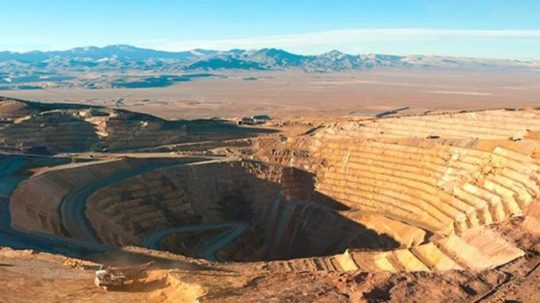
Nevada Gold Mines
Si trova in Nevada e la sua fortunata produzione dipende dalla presenza del Carlin Trend, una formazione geologica molto particolare che presenta alti livelli di mineralizzazione aurifere e che si estende per ben 56 chilometri.
Kibali, Repubblica Democratica del Congo
Situata a poco più di duecento chilometri dal confine con l’Uganda, la miniera di Kibali nel 2021 ha prodotto oro per ben 23 tonnellate. Si tratta di una miniera piuttosto giovane per quanto riguarda l’estrazione dato che è entrata in attività solo nel 2013. Al momento i lavori vengono svolti sia a cielo aperto che in sotterraneo.
Muruntau in Uzbekistan
Si classifica in seconda posizione per produzione di oro nel 2021 con le sue (quasi) 85 tonnellate, questa miniera è larga 2,5 chilometri e lunga 3,3 chilometri; presenta una profondità di 600 metri e, dalle ultime stime, sembra che contenga ancora ben 4.200 tonnellate di riserve d’oro.
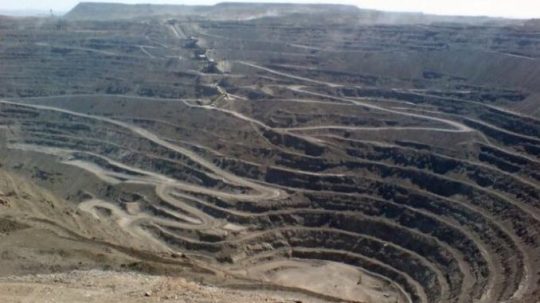
Muruntau Uzbekistan
Olimpiada in Russia
Quarta nella classifica delle miniere d’oro più produttive del 2021, la sua posizione è in una delle province aurifere più produttive di tutta la Russia. Qui la produzione inizia nel 1996 e ad oggi detiene la metà di tutto l’oro prodotto dalla più importante compagnia russa nel settore, la Polyus.
Canadian Malartic
Si tratta della miniera più grande di tutto il Canada che, nel 2021, ha totalizzato circa 20 tonnellate di oro raccolto.

Caniadian Malartic
La miniera è a cielo aperto ma esiste un progetto chiamato Odissey che mira a trasformarla in una miniera sotterranea entro i prossimi sei anni.
Read the full article
#Caniadian#GoldMines#Grasberg#Kibali#Malartic#miniera#minierad'oro#Muruntau#Nevada#Olimpiada#oro#RepubblicademocraticadelCongo#Russia#Uzbekistan
0 notes
Text
10 didžiausių aukso gavybos šalių 2022
10 didžiausių aukso gavybos šalių 2022 metais. Šiais metais aukso ateities sandorių kaina jau pakilo į pusmečio aukštumas ir artėja prie
#gold @auksas #goldreserves #money #investing
10 didžiausių aukso gavybos šalių 2022 metais. Šiais metais aukso ateities sandorių kaina jau pakilo į pusmečio aukštumas ir artėja prie $2000 už Trojos unciją. Prie to prisidėjo pasaulinė pandemija, tiekimo grandinės sutrikimas, itin sudėtinga geopolitinė situacija. Ir ne tik Europoje.
(more…)

View On WordPress
#AngloGold Ashanti#Aukso ateities sandoriai#Gold Fields#Grasberg#Investavimas#Money#Muruntau#Pinigai
1 note
·
View note
Photo

Uzbekistan, officially Republic of Uzbekistan, Uzbek Ŭzbekiston or Ŭzbekistan Respublikasi, country in Central Asia. It lies mainly between two major rivers, the Syr Darya (ancient Jaxartes River) to the northeast and the Amu Darya (ancient Oxus River) to the southwest, though they only partly form its boundaries. Uzbekistan is bordered by Kazakhstan to the northwest and north, Kyrgyzstan and Tajikistan to the east and southeast, Afghanistan to the south, and Turkmenistan to the southwest. The autonomous republic of Qoraqalpoghiston (Karakalpakstan) is located in the western third of the country. The Soviet government established the Uzbek Soviet Socialist Republic as a constituent (union) republic of the U.S.S.R. in 1924. Uzbekistan declared its independence from the Soviet Union on August 31, 1991. The capital is Tashkent (Toshkent).
Uzbekistan is among the world’s leading cotton producers. It is known for its orchards and vineyards and is also important for raising Karakul sheep and silkworms. Uzbekistan’s mineral and oil and gas reserves are substantial. The country produces and exports a large volume of natural gas. The central bank issues the national currency, the sum.
The country’s resources include metallic ores; in the Olmaliq (Almalyk) mining belt in the Kurama Range, copper, zinc, lead, tungsten, and molybdenum are extracted. Uzbekistan possesses substantial reserves of natural gas, oil, and coal. The country consumes large amounts of its natural gas, and gas pipelines link its cities and stretch from Bukhara to the Ural region in Russia as well. Surveys show petroleum resources in the Fergana Valley (including major reserves in the Namangan area), in the vicinity of Bukhara, and in Qoraqalpoghiston. The modern extraction of coal began to gain importance, especially in the Angren fields, only during World War II. Hydroelectric dams on the Syr Darya, the Naryn, and the Chirchiq rivers help augment the country’s nuclear-, coal-, and petroleum-powered generation of electricity.
Centuries-old rumours of extensive gold deposits in Uzbekistan evidently arose from a basis in fact. Rich polymetallic ores have been found in the Ohangaron (Akhangaran) field southeast of Tashkent. Miners there extract copper, some gold, lead, molybdenum, tungsten, and zinc. A plant for heat-leaching gold from low-grade ore was built in the mid-1990s by a subsidiary of the Newmont Mining Corporation in the Muruntau field in the Kyzylkum Desert of north-central Uzbekistan. It was intended to be a joint venture with the government, but Newmont Mining Corporation’s share was forfeited in a legal battle in 2007.
Uzbekistan requires greater water resources. By the early 1980s the government considered the shortage of water desperate. Officials in Moscow and Tashkent developed a plan to divert substantial amounts of water out of the Irtysh River far to the north into a pumped system that would aid in watering parts of lower Russia, Kazakhstan, and Uzbekistan. The project was killed, however, before it began, leaving Uzbekistan with chronic water shortages.
Ample sunlight, mild winters of short duration, fertile irrigated soil, and good pastures make Uzbekistan suitable for cattle raising and the cultivation of cotton. Irrigation has fallen into disfavour owing to the depletion of the great rivers, and the construction of new irrigation systems has been prohibited or curtailed. Already existing grand canals include the Great Fergana, Northern Fergana, Southern Fergana, and Tashkent. Several large artificial lakes and reservoirs have been created on the Zeravshan and other rivers.
In addition to the high and stable cotton yield in this most northerly of the great cotton regions of the world, growers have raised silkworms systematically since the 4th century. The silkworms are fed mulberry leaves from the many trees planted along streets and ditches. The Fergana Valley is especially noted for silk production.
Varieties of melons, apricots, pomegranates, berries, apples, pears, cherries, and figs grow abundantly, as do vegetables such as carrots, cucumbers, onions, tomatoes, and greens. Uzbekistan’s grapes are made into wine or raisins or are eaten fresh. Fruits and vegetables are sold both in the bazaars of Tashkent, Samarkand, Fergana, and other localities and in trade with neighbouring states. Korean agriculturalists cultivate rice along the middle Syr Darya. Sheep are the principal livestock.
Uzbekistan is the main producer of machinery and heavy equipment in Central Asia. The republic manufactures machines and equipment for cotton cultivation, harvesting, and processing and for use in the textile industry, irrigation, and road construction. This emphasis on making machinery also makes ferrous and nonferrous metallurgy important. The first metallurgical plant began operation at Bekobod in 1946.
Light industry includes tea-packing plants and factories for garment making.
The leading exports from Uzbekistan consist largely of extracted natural resources or raw materials—cotton, natural gas, oil, coal, silk, fruit, and Karakul pelts. Some fresh produce reaches Moscow and other northern markets. Manufactured goods such as machines, cement, textiles, and fertilizer are also exported. Uzbekistan’s largest sources of imports are China, Russia, South Korea, and Kazakhstan. Its main export destinations are Switzerland, China, Turkey, and Kazakhstan.
The great obstacle to further development of markets for Uzbekistan’s copious truck gardening and fruit growing remains the antiquated means of distribution. Neither the surface nor air transport now available can efficiently or with adequate refrigeration handle the volume produced in Uzbekistan and needed by the Baltic states, Russia, Belarus, and Ukraine.
Old railways connect the republic’s major urban centres with other Central Asian republics and extend to Moscow and Siberia. Uzbekistan never had a domestic airline of its own until after independence in 1991, when former Soviet Aeroflot airplanes and their pilots were chartered to fly rather infrequently from such cities as Samarkand and Tashkent to nearby cities. Air service now connects Tashkent with London, New York, and other international cities.
Trucks transport most of the freight carried, and the roadways, like other facilities, require much repair—virtual reconstruction—and widening before they can support the modernizing economies that their builders once hoped to link with each other. The Great Uzbek Tashkent-Termiz Highway runs south almost to the border with Afghanistan. Termiz remains virtually a dead end in terms of trade, however, especially since the Soviet intervention (1979–89) in the Afghan War. A second road, the Zeravshan Highway, connects Samarkand with Chärjew, Turkmenistan, in the west. The Fergana Ring links the main settlements within the populous Fergana Valley.
Finally, I will leave a link which includes all companies and enterprises in Uzbekistan, for those who want to research and discover more about this country. Thanks for reading.
All businesses address in Uzbekistan: https://findsun.net/UZ
0 notes
Text
Quý 1/2021: Các mỏ vàng lớn nhất thế giới
Quý 1/2021: Các mỏ vàng lớn nhất thế giới
Trong quý 1 năm 2021, Barrick’s Carlin ở Nevada là trung tâm sản xuất vàng lớn nhất thế giới. Khi quá trình khai thác dưới lòng đất tiến triển, mỏ Grasberg của Freeport-McMoRan ở Indonesia đã nhảy lên vị trí thứ hai.
Dựa trên số liệu báo cáo về sản lượng khai thác trong quý 1 năm 2021, Kitco xếp hạng 10 mỏ vàng lớn nhất thế giới. Theo báo cáo, mỏ vàng Muruntau lớn nhất thế giới ở Uzbekistan đã bị…

View On WordPress
0 notes
Text
Aofy Gold|The largest gold mines in the world
Which country holds the distinction for the largest gold producing mine? Who owns these mines? And how much gold does each contain? Let’s take a look!
Muruntau Gold Deposit, Uzbekistan, Asia
In 2016, this gold mine produced more than 60 tonnes of gold, making it the largest one in the world. Operated by the Uzbek government and co-owned by Navoi Mining, the mine is reported to have more than 5000 tonnes of gold reserves yet to be mined- that’s the weight of 25 blue whales!
Muruntau Gold Mine, Uzbekistan
Pueblo Viejo, Dominican Republic, South America
The Pueblo Viejo mine not only holds gold reserves but silver as well. Currently, it is jointly owned by Canadian companies, Barrick Gold Corporation and Goldcorp Inc. The mine’s latest reported gold output was 36 tonnes.
Pueblo Viejo Gold Mine, South America
Goldstrike, USA, North America
Located in the state of Nevada, this mine is also owned by Canada’s Barrick Gold Corp and produced an output of 34 tonnes of gold in 2016.
Goldstrike Gold Mine, USA
Grasberg, Indonesia, Asia
The largest gold mine in the world by area, Grasberg holds gold, copper, and silver reserves as well. This mine employs almost 20,000 people and is jointly owned by the American company Freeport McMoRan and the Indonesian government. 33 tonnes of gold was mined here as per latest available data.
Grasberg Gold Mine, Indonesia
Cortez, USA, North America
Another Barrick Gold Corp owned mine from Nevada, Cortez gold mine is the largest gold producer for both the company and the state. Last year, almost 33 tonnes of gold was produced here.
Cortez Gold Mine, USA
Carlin Trend, USA, North America
This mine has multiple locations across Nevada and was first explored in 1983 by America’s Newmont Mining Corporation. The latest reported gold output from the mine stands at a little less than 30 tonnes
Carlin Trend Gold Mine, USA
Olimpiada, Russia, Asia/Europe
One of the largest gold mines in the country, this mine started production in 1996, and produced 29.3 tonnes of gold in 2016
Olimpiada Gold Mine, Russia
Lihir, Papua New Guinea
Located in Oceania, a region centred on the islands of the central Pacific Ocean, the Lihir mine belonged to the company Lihir Gold Limited which had operations in neighbouring Australia and West Africa as well. Now owned by Australia’s Newcrest Mining, the mine produced a total of 28 tonnes of gold in 2016.
Lihir Gold Mine, Papua New Guinea
Batu Hijau, Indonesia, Asia
Mined by the domestic company Amman Minerals, the Batu Hijau mine in Indonesia produced 26.7 tonnes of gold last year.
Bata Hijau Gold Mine, Indonesia
Boddington, Australia
The mine was first mined in 1987 but shut down in 2001. However, mining here was reopened in 2010 and this is now Australia’s largest gold mine. Owned by America’s Newmont, almost 25 tonnes of gold was produced here in 2016.
0 notes
Photo

Going for Gold in Nevada
Goldstrike mine in northeastern Nevada is one of the largest gold mines in the world. In 2016, the mine produced 1.1 million ounces of gold. Only two other operations—the Grasberg mine in Indonesia and the Muruntau mine in Uzbekistan—produced more.
On September 25, 2016, the Advanced Spaceborne Thermal Emission and Reflection Radiometer (ASTER) on NASA’s Terra satellite captured this false-color image of the mine. Vegetation appears red. Water is dark blue. Bare rock appears in shades of brown and gray. The most noticeable feature is the Betze-Post open-pit mine, which is managed by Barrick Gold Corporation and has a depth of more than 500 meters (1,600 feet). Smaller open-pit mines operated by other companies are also visible northwest and southeast of the Betze-Post pit.
Trucks transport ore from the bottom of the pit to nearby processing facilities, where gold is concentrated and extracted. On average, there is roughly 0.1 ounce of gold per ton of ore. Processing typically involves crushing ore into powder, exposing it to high temperatures and pressures, and leaching material out of liquid slurries. Leftover slurry is stored in tailing ponds, where solids settle out. In addition to its large open-pit mine, Goldstrike has two underground mines that also produce ore.
One of the key issues facing mines is water management. Open-pit mining requires pumping groundwater out of adjacent aquifers in order to prevent the pit from flooding. At Goldstrike, operators pump several thousand gallons of groundwater per minute to keep the water table below the level of the pit. Some of this water is used to process ore, but some of it gets used in other ways or pumped backed into the ground. For instance, the water used to irrigate the circular fields southwest of the Betze-Post pit comes from groundwater pumping related to the mining.
While the company that operates Goldstrike mine maintains a network of monitoring wells and stream gauges to track how mine activities are affecting the aquifer, it also has used Interferometric synthetic aperture radar(InSAR) data from satellites as part of its monitoring efforts. Since each monitoring well can cost between $300,000 to $500,000, and InSAR offers a big-picture view of the aquifer, a satellite perspective can offer an effective way of monitoring subsidence, uplift, and other changes in the Earth’s crust associated with groundwater pumping, the company noted. InSAR observations show subsidence in areas near the mines and uplift in areas southwest of the mines.
References and Further Reading
Barrick (2008) Innovative satellite imagery takes water monitoring to the next level. Accessed August 25, 2017.
Barrick (2014) Nevada Mine Tour. Accessed August 25, 2017.
Infomine (2008) Goldstrike Mine—Nevada’s Giant Golden Goose. Accessed August 25, 2017.
Mining Technology Betze-Post Gold Mine, Nevada, United States of America. Accessed June 26, 2017.
The New York Times (2005, December 30) Drier, Tainted Nevada May Be Legacy of Gold Rush. Accessed August 25, 2017.
North Nevada Business Weekly (2014, March 10) Barrick invests heavily in new processing. Accessed August 25, 2017.
Price, J. et al. (2012) Update on Nevada Mining and Production and Exploration. Accessed August 25, 2017.
Shelp, M. et al. (2011) The Applications of Satellite Based Remote Sensing Techniques in the Hydrological Assessment of Mine Water Supply and Management Systems. Mine Water and the Environment, 30 (4), 242-251.
U.S. Geological Survey (2005) Changes in Ground-Water Levels in the Carlin Trend Area, North-Central Nevada, 1989-2003. Accessed August 25, 2017.
Zhan, J. (2012) Mine Dewatering and Water Management at Barrick Goldstrike Mine in the Carlin Trend, Nevada.Accessed August 25, 2017.
NASA Earth Observatory image by Jesse Allen, using data from NASA/GSFC/METI/ERSDAC/JAROS, and U.S./Japan ASTER Science Team. Story by Adam Voiland.
Instrument(s): Terra - ASTER
3 notes
·
View notes
Photo

41.499014°N, 64.585832°E Tamdy district, Navoiy region, Uzbekistan photo by Volchok-VF — Now that's some aim: today the randomizer landed right inside the largest open-pit gold mine in the world, the Muruntau Gold Mine. "The region's economy is heavily dependent on large mining," Wikipedia notes. You don't say!
10 notes
·
View notes
Text
For investors dreaming of a country that is fabulously rich in mineral resources, most of the world's top ten gold deposits are well known. Starting with the top line of the list, the Witwatersrand Basin deposit has been developed by dozens of companies for more than a hundred years; The Muruntau deposit (which also contains silver) is publicly owned and managed by the state; followed by Grasberg (which mainly produces copper and which is mainly owned by Freeport-McMoRan), Olympic Dam (copper, BHP Billiton), Pebble (copper, Northern Dynasty and Anglo American), Natalka (Pole), Dry Log (possibly, Polyus), Oyu Tolgoi (copper, Ivanhoe Mines and Rio Tinto), Reko Diq (copper, Barrick, which has the world's largest commodity reserves of gold) and Lihir.
If you do not touch the cases of a full merger, only two of the mentioned assets - Pebble and Oyu Tolgoi - are, so to say, easily accessible and have, as already mentioned, larger mining companies: Northern Dynasty / Anglo American and Ivanhoe Mines / Rio Tinto. Investors readily believe that these two mining companies are the only predators that have targeted Pebble and Oyu Tolgoi; Northern Dynasty and Ivanhoe Mines are the best operating assets in the world for some time.
Assuming that Ivanhoe Mines eventually takes possession of half of Oyu Tolgoi, a question that has not yet been resolved with the Mongolian government, it will already amount to 15.8 million ounces of gold, which can be attributed to Ivanhoe Mines. Taking into account the market value of Ivanhoe, equal to 2.4 billion US dollars, this means that the gold ounces of Oyu Tolgoi, attributed to the company Ivanhoe Mines, cost about 152.69 US dollars each. This is indeed a very high cost; the huge reserves at the disposal of Northern Dynasty, 47.1 million ounces of gold at the Pebble field, are valued at only $ 12.10 per ounce. Both Oyu Tolgoi and Pebble are classified primarily as powerful copper mining enterprises.
Compare these figures to Western Copper, which owns 8.0 million ounces of gold at its Casino project in the Yukon; this deposit also contains industrial reserves of copper, silver and molybdenum. Despite the fact that this project as a whole is more advanced than Oyu Tolgoi and Pebble, the market estimates the gold ounces of Western Copper at the Casino field at only $ 3.22 each. The three million ounces of gold that San Anton Resource owns on the land of San Anton Property (34% owned by Goldcorp), where the near-surface gold, silver and copper deposit Cerro del Gallo is located, are valued at $ 8.31 per ounce compared to USD 26.70 per ounce at the mine owned by Minefinders and containing 6.7 million ounces of gold (with a partial silver content), which is also located in Mexico. Further, 13.8 million ounces of gold contained in the Volcan field and developed by Andina Minerals in Region III in Chile are valued at $ 6.56 per ounce. https://weddingpearlneecklace.tumblr.com/
0 notes
Text
Dove viene estratto la maggior parte dell'oro mondiale
Miniere d’oro: i 10 giacimenti più grandi e importanti nel mondo. Quali sono le miniere che producono più oro al mondo? In questo articolo vedremo quali sono i 10 giacimenti minerari più importanti per l’estrazione aurifera.
L'oro è forse il metallo più iconico di tutti i tempi: la sua origine è legata a stelle di grandi dimensioni e qui, sulla Terra, il suo particolare colore lo ha resto uno tra i materiali più ambiti fin dall'alba della civiltà – tanto che ancora oggi la sua produzione procede a pieno ritmo.

Ma, a proposito, quali sono le miniere che al mondo ne estraggono di più? In questo articolo vedremo quali sono le più grandi miniere di oro al mondo, dove si trovano e quanto metallo prezioso sono riuscite a produrre nel 2021.
1. Nevada Gold Mines (USA)

Al primo posto della classifica troviamo una miniera americana che ha fatto registrare nel 2021 una produzione di poco inferiore alle 94 tonnellate. Ci troviamo in Nevada e la fortuna della Nevada Gold Mines è legata alla presenza del cosiddetto "Carlin Trend", un particolare tipo di formazione geologica composta da livelli ricchi di mineralizzazioni aurifere: pensate che questo sistema di estende per circa 56 km ed è in corso di estrazione dall'ormai lontano 1965.
2. Muruntau (Uzbekistan)
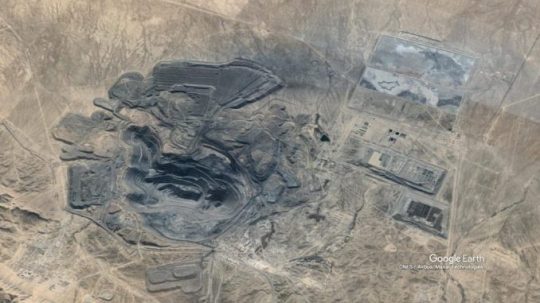
Quella di Muruntau in Uzbekistan è una miniera a cielo aperto che ha prodotto quasi 85 tonnellate nel 2021. La struttura è lunga circa 3,3 km, larga 2,5 km, con una profondità di circa 600 metri ed è gestita dalla compagnia statale Navoi. Si stima che questa miniera abbia ancora più di 4200 tonnellate di riserve d'oro, quindi è molto probabile che anche nei prossimi anni continuerà a trovarsi tra i primi posti di questa classifica.
3. Grasberg (Indonesia)

La miniera di Grasberg è situata nella provincia indonesiana di Papua e nel 2021 ha prodotto circa 38,8 tonnellate d'oro. È stata scoperta nel 1936 da un geologo olandese e, dopo essere stata una miniera a cielo aperto dal 1990 al 2019, è stata poi convertita in miniera sotterranea. Pensate che tutt'oggi è una tra le miniere di oro e rame più importanti del mondo.
4. Olimpiada (Russia)
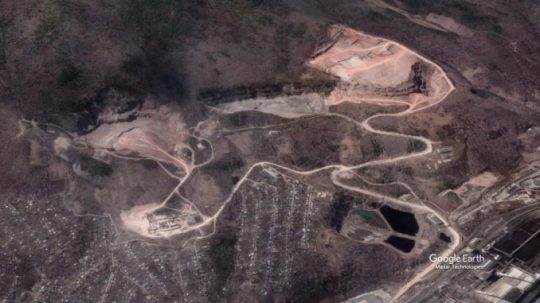
La miniera di Olimpiada ha prodotto nel 2021 circa 33,5 tonnellate d'oro e si trova in una delle province aurifere più prolifiche di tutta la nazione. Qui la produzione è iniziata nel 1996 e oggi copre circa la metà di tutto l'oro prodotto dalla Polyus, la principale compagnia russa ad operare nel settore.
5. Pueblo Viejo (Repubblica Dominicana)
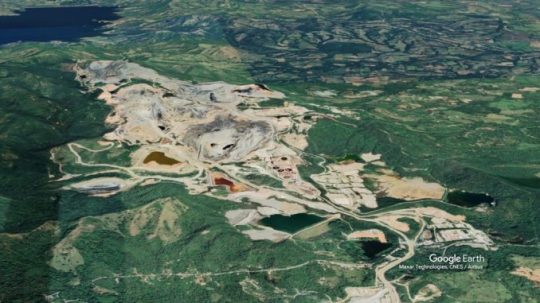
La miniera Pueblo Viejo in Repubblica Dominicana ha prodotto 23,8 tonnellate nell'ultimo anno e si trova a circa 100 km di distanza dalla capitale del Paese Santo Domingo. La miniera è gestita dalla Pueblo Viejo Dominicana Corporation, una joint venture tra i due grandi player del settore Barrick (60%) e Newmont (40%).
6. Kibali (Repubblica Democratica del Congo)

La miniera di Kibali, nella Repubblica Democratica del Congo, si trova a circa 210 km dal confine con l'Uganda e nel 2021 ha fatto registrare una produzione aurifera pari a circa 23 tonnellate. La miniera è entrata in attività nel 2013 e attualmente le operazioni vengono svolte sia a cielo aperto che in sotterraneo.
7. Cadia (Australia)
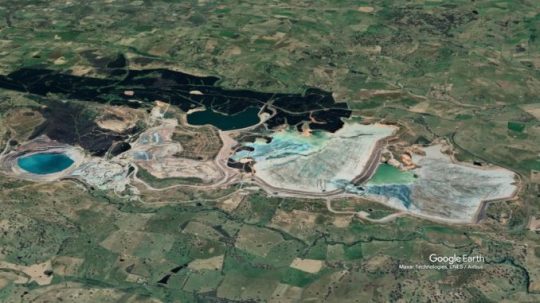
La miniera di Cadia si trova in Australia e nel 2021 la sua produzione si è aggirata attorno alle 22 tonnellate. Si tratta di una delle miniere più grandi di tutta l'Australia e viene sfruttata principalmente per la produzione di oro e rame.
8. Lihir (Papua Nuova Guinea) - 20,90 t

La miniera di Lihir, in Papua Nuova Guinea, ha estratto nell'ultimo anno poco meno di 21 tonnellate d'oro ed è situata all'intero del cratere di un vulcano ormai estinto.
9. Canadian Malartic (Canada) - 20,27 t

La Canadian Malartic è la miniera più grande di tutto il Canada e nell'ultimo anno ha estratto poco più di 20 tonnellate d'oro. Si tratta di una miniera prevalentemente a cielo aperto, anche se è stato intrapreso il progetto Odissey che punta alla trasformazione della Canadian Malartic in una miniera sotterranea entro il 2028: la vita prevista della struttura verrà così estesa fino ad almeno il 2039.
10. Boddington (Australia) - 19,73 t
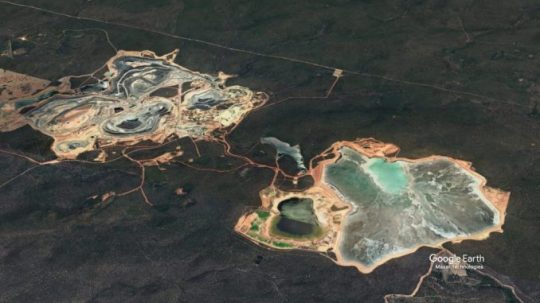
La miniera di Boddington, in Australia, ha prodotto nel 2021 poco più di 19 tonnellate d'oro e si tratta di uno dei principali poli estrattivi d'Australia sia per quanto riguarda l'oro che per il rame.
Read the full article
#benirifugio#Boddington#Cadia#CanadianMalartic#Grasberg#Kibali#Lihir#lingotti#miniera#miniere#Muruntau#NevadaGoldMines#Olimpiada#oro#PuebloViejo
0 notes